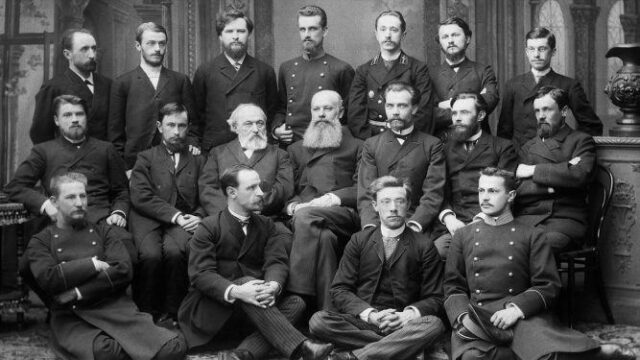Liberalism’s Cure for the Man Crisis Makes Men Worse

We called them the Pantheon.
They were the men we turned to when things weren’t going well. When, for example, we didn’t sell a story we had written to a magazine, or our band didn’t get a gig. Or when we got hurt playing football or a girl broke one of our hearts. Hemingway. Theodore Roosevelt. Thomas Merton. Jack Kerouac and Jack Kirby. The Pet Shop Boys. Ronald Reagan. Jesus. Our fathers.
My best friend in college and I would evoke these men (and a few others) when we were feeling dispirited and defeated. We were young men, sometimes getting drunk, trying to be writers, playing in lousy bands, getting into fights, and falling in love with women. We were just being guys. And as Norman Mailer once pointed out, men can and do feel all the sensitivity of women—though it might manifest itself differently. We can feel lost. And when my friend and I felt lost, we would look at each other and say, “Evoke the Pantheon.”
So it was that we would meditate on Jack Kirby, the tough New York kid who co-created the Marvel universe at his drawing board. Or Hemingway, writing like a god. Or the Pet Shop Boys, with their humor and transcendent melodies. When we die, we want to be in their company, we would say. It gave us strength.
These days boys are discouraged from looking up to strong and daring men—and it goes without saying that many boys today lack such a figure in their own lives or homes. “While girls tend to show similar outcomes whether they are raised in single or dual-parent homes,” researcher Aadi Golccha wrote recently in the Stanford Review,
boys suffer significantly in the absence of a father figure. For example, men who grow up with their biological fathers are about two and a half times more likely to graduate college, even after controlling for race, income, age, and maternal education. They are also almost twice as likely to be employed or in school by their mid-twenties, and about half as likely to be incarcerated.
Of course, to the left, the answer is never to ask what might restore fatherhood but to continue the dismantling of things that result in such “structural inequalities.” If everyone can’t have a strong father, why should anyone?
Writing recently in Ms., Jewel Woods offers this:
The feminist-inspired men’s health movement emerged in the late 1960s and early ’70s in direct response to the exclusion of men’s gendered experiences from traditional health research. It introduced a critical lens that interprets men’s health outcomes not as the products of biology alone, but as the result of a complex interplay between structural inequalities and deeply embedded cultural ideologies about masculinity. Issues such as accidents, addiction and loneliness are profoundly shaped by cultural norms that promote risk-taking, suppress emotional expression and discourage help-seeking—factors that constrain men’s emotional capacity and inhibit the formation of close, supportive relationships, particularly with other men.
In other words, Woods seeks to pathologize our need for a Pantheon. We look to those figures of strength at our peril, she would insist. Yet growing up my friends and I often admired men who were risk-takers—those who could put side emotion in the quest for a higher goal.
In Ann Hornaday’s book Taking Pictures: How to Watch Movies, the Washington Post movie critic explores what she calls “a cry for help” among both the men who make movies in Hollywood and the men who run politics in Washington. Hornaday sees something sinister and pathetic going on and insists that both “are fear-based cultures whose once-invincible leaders are facing radical changes and imminent extinction.” The demographics are shifting, she explains, more women are taking positions of power, and the economy doesn’t reward physical labor as it once did. Men, writes Hornaday, are “coping with those threats, to use Gloria Steinem’s famous phrase, with massive cases of self-induced testosterone poisoning.” They are ratcheting up political rhetoric and movie explosions to “compensate for deeper insecurities.”
What’s notable about Hornaday’s essay, however, is that she doesn’t draw distinctions or explore the role of honor in life or in these films. She lists four films from 2013, Star Trek: Into Darkness, Man of Steel, White House Down, and Fast & Furious 6 as examples of this explosive manifestation of male insecurity, then ties them in with male political maneuvering in Washington. But surely Star Trek’s Captain James T. Kirk, a man whose main sexual indiscretion in the film is to catch a brief glimpse of a woman in her underwear, is a different sort of character from Anthony Weiner. In “Macho Misfire” Hornaday cites Congressman Steve King’s comments about the undocumented as drug runners as the kind of “macho braggadocio” that we can correlate to gun crazy summer guy films. Surely Superman, an alien who acts to protect his adopted home, would disagree. And in Fast & Furious, the main male character is driven by a desire to protect the woman he loves and create a family. Is that male insecurity? Sure. But it’s insecurity that drives the most noble and timeless goals.
One gets the sense that Ann Hornaday just doesn’t like men—and so she threw a lot of bogus sociology at us to validate her own insecurities.
Sitting on a table near where I’m typing these words is a massive and epic three-volume set of books, National Geographic: Around the World in 125 Years. These are the largest, heaviest, and most amazing books I have ever seen—which is probably why they go for around $500. My father was an editor at National Geographic for three decades. Looking through the volumes, I noticed that some of the best photographs were those taken by Luis Marden.
Marden was a risk-taking, educated, and honorable man who was born in 1913 and died in 2003. He never went to college. He was hired by National Geographic at age 21. A pioneer of underwater photography, he spoke five languages. His house, on the banks of the Potomac River in Virginia, was custom built for him by Frank Lloyd Wright. He found the wreck of The Bounty and dove with Jaques Cousteau. He wore a Brooks Brothers suit, a “shirt of sea island cotton,” and a silk tie. He was friends with both King Hussein of Jordan and the King of Tonga. Among his discoveries were an Aepyornis egg (discovered in Madagascar); the Brazilian orchid Epistephium mardenii (yes, named after him); a lobster parasite that became a new species of crustacean; and the first report of underwater florescence. At a young age Marden did a story on ultralights, small airplanes. He then acquired one and flew it around his house in Virginia.
I got to meet Luis Marden on several occasions; the most eventful time was during the 1986 search for the Columbus landfall. After years of research, and with the help of Luis Marden, my father, Joe Judge, argued in a cover story for National Geographic that Christopher Columbus had first landed not at San Salvador Island, but on an island called Samana Cay. Marden had calculated Columbus’s likely trip using then-new computer technology, which allowed for tracing ocean currents and the effect of wind on sails over long periods of time. His track landed in Samana Cay. The press conference announcing this find was the largest in the history of the National Geographic Society.
In her essay “The Art of Being Luis Marden,” Cathy Newman captured her subject’s personality and achievements:
Marden combines the refined sensibility of the Old World with a swashbuckling New World sense of adventure. He is a symphony of contradictions. He understands the intricacies of French vintage as thoroughly as those of Fijian etiquette … Although at ease with everyone from princes to street sweepers, he prefers solitude to society. He is a gentle misanthrope at heart.
Can America produce Luis Mardens anymore? Not if women like Ann Hornaday and the political left that caters to them have anything to say about it.
https://chroniclesmagazine.org/web/liberalisms-cure-for-the-man-crisis-makes-men-worse
